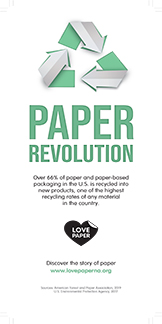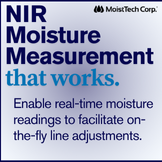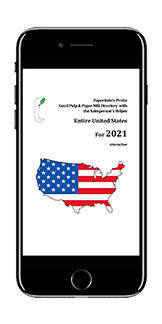Millennials and Gen Z are known as "robust samplers," meaning they are accustomed to a risk-free subscription model for media consumption. Think Netflix, Amazon Unlimited, Audible, and Spotify.
As it turns out, according to a new report from the American Library Association (ALA), "in the traditional, print-centered book publishing ecosystem, libraries are the place for robust sampling."
According to the new report Gen Z and Millennials: How They Use Public Libraries and Identify Through Media Use, Gen Z and Millennials (roughly ages 13 to 40) are using public libraries, both in person and digitally, at higher rates than older generations.
The report and survey data show that 54% of Gen Z and Millennials visited a physical library within the previous 12 months. The data also revealed younger Americans' preference for physical versions of books - they read and buy twice as many print books per month than older generations. In fact, print books are Gen Z's number one preferred book format, and both Gen Z and Millennials are consuming books: on average, they buy and read one ebook, one audiobook, and two print books per month. Gen Zers purchase and read more than Millennials in all formats, the survey revealed - and even more interestingly - the younger Gen Z's are, the more print books they buy.
"Libraries are popular among Gen Z and Millennials, even among self-identified non-readers. [They] want and need the resources public libraries offer," said Kathi Inman Berens, Ph.D., who co-authored the report with Rachel Noorda, Ph.D., both of Portland State University. "Just as they flit between multiple media formats, they also jump between modes of access: libraries to bookstores to influencer posts to subscriptions, and back again. Libraries are a notable way Gen Z and Millennials discover books."
The survey's data does show that younger readers slightly prefer bookstores to libraries for printed book discovery. "The instant availability of popular titles and the shopping experience would seem to be the most important differentiators between bookstores and libraries; however, the most popular print books at the library are less likely to be on the shelves for patrons," according to the report.
McKinsey's recent insights revealed that Gen Z "has helped catalyze a literature revival." Book sales following the pandemic set records, especially in young adult fiction, which increased 30.7 percent in 2021. Hook Research reported that YA fiction print sales have increased by 48.2% since 2018. The category experienced huge jumps in sales during the pandemic, growing by 24.7% in 2020 and 27.5% in 2021.
In 2023, sales of YA books and their circulation in libraries saw a slight decline - and in the first quarter of 2024, a steep one - but according to those in reading and publishing circles, that doesn't necessarily equate to a decline in interest in reading paper books. A scarcity of lightweight, inexpensive paperbacks readily available on library shelves may contribute to the decline, even though paperback sales continue to be the lion's share of YA/Children's revenue.

Unsurprisingly, Gen Z and Millennials rely heavily on social media for book recommendations and community connection around authors and series, with the youngest readers popularizing the global hashtag #booktok. Printed books have proven to make good props in visual media like TikTok short videos and Instagram Reels. Many #booktoks focus on the materiality of the printed book, with the influencers holding books, showing videos of abundant page markers and margin notes, or building a home library. One video features a homemade book advent calendar with 24 wrapped books to unbox over the month.
The success of algorithm-powered digital marketing helps to explain why over 30% of Gen Z and Millennials in the ALA survey buy books based on recommendations from Instagram and TikTok reviews and ads.
Also, in 2023, membership in the American Booksellers Association (ABA) reached its highest level in more than 20 years. The ABA added 173 members in 2022 and had 2,185 bookstore businesses and 2,599 locations last year - nearly 300 more members than it had in 2019.
Young readers cite eye strain, digital detoxing, and - again - their love of libraries as reasons for the shift to traditional book buying and reading habits that helped to skyrocket book sales in the US to a record of more than 843 million units in 2021, 789 million in 2022 and 767.36, in 2023, the three highest sales years in the last two decades.
Want to read more about the value and appeal of print and paper products? Visit the TSNA website to access more industry reports like our annual Trend Tracker Report. which seeks to understand changing consumer preferences, perceptions and attitudes toward print, paper, and paper-based packaging.






















